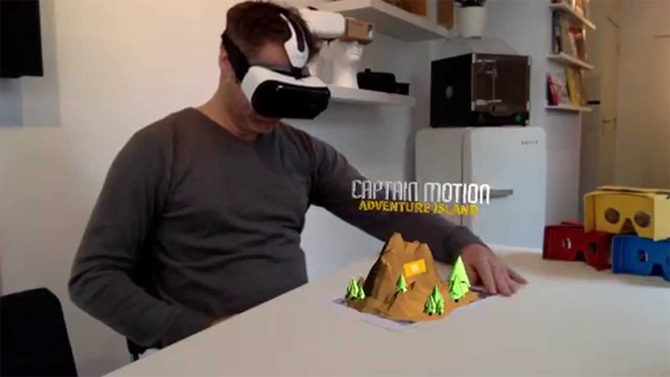Is Mixed Reality winning over VR?
Audio : Listen to This Blog.
Is Mixed Reality winning over VR?
Are you ready to take a slice of mixed reality offered by HoloLens? Because experts perceive that mixed reality might take over the other artificial realities like augmented reality and virtual reality in the future.
As Tim Cook says, “most people don’t want to lock themselves out from the world” but that’s what you do when you put on your VR headset. So could mixed reality really win over? Chances are bright for MR here. Remember the scenes from the Iron Man movie series- the one where Tony Stark synthesizes the atomic structure of a new element with holograms? Or the many scenes where he navigates through his hologram screens, walks through them and alters them in real time with a flick of a finger? Or take any science fiction movie for that matter! Well, it would not be right to call them science “fiction” anymore, because the concepts of superimposing virtual elements over the real world or what we simply call mixed reality is now more than just a mere concept.
Do you know what the best part of the current digital age is? In the past, there were concepts, innovations, ideas but then there were also limitations in hardware and technology to implement them. The other big hindrance to materializing the ideas was the skepticism to accept anything beyond the tangible reality. But then, seeing the myriad of benefits they all offer and the unmatchable freedom they give people started welcoming VR, AR, and MR. The millennials are enthusiastic about better user interfaces, collaborative workspaces and all the advantages of incorporating mixed reality in various places.

Why lock yourself out when you can be there at both the places?
When you are using VR at any place, you are there, but not there! Your view of the real world around you is completely blocked. If you plug your headset, you are completely disconnected from where you are. This experience can’t be generalized to be a limitation of VR. Contextually, its impacts vary. When you watch a movie or when you play a game, this type of immersive experience, free from all distractions would be a boon. But take into consideration an office scenario- just because you are virtually connected in a conference call or say a meeting with a teammate far away, you cannot ignore your real office around you. In this case, the agility offered by MR might seem a lot better option than the confinement provided by VR.
Let’s talk business!
More often, the success of one technology over another is gauged with the number of application it finds in the business scenario, a large-scale use. The application of MR in the enterprise setting is one clear indicator of how MR has a competitive edge over the other similar technologies. Well, we can’t really call them “competitors because one evolves into another. And MR is something that encompasses VR too, just in a more practical way. In the business scenario, collaboration weighs more than an immersive experience. What MR actually tries is to make you more connected with the real world than blocking you from it. In fact, MR can make you more aware of the surroundings and give you finer details that your vision might miss out. This makes MR a slightly better choice than VR for the workplace scenario. The service sector is one that has one of the brightest chances of improvements with proper adoption of MR.
An interactive interface impresses at the end of the day:
VR headsets are interactive too. There is no denying that. But with VR, as your real world vision is blocked, you would have to have a special set up, preferably a safe room to use your VR headset. Otherwise, chances are you would collide with a wall while you walk through your virtual world. Also, how many times have you had to take off your VR headset after a brief few minutes of gaming as you felt dizzy? This is something that many users experience with VR mainly because there is not much of a balance struck between the real and virtual worlds. But with MR, the user interface is interactive. The richness of the experience given by MR doesn’t come with any compromise on the awareness of what is around. With MR in the workplace, communication and collaboration become a lot better. You can connect with your team or clients in other countries and resolve issues with gestures and voice-based commands.
The future scope for MR:
MR is a more tangible form of virtual reality that seems more practical to adopt on a large scale. The technology, however, is still in its early phase. There is a lot of scope for development here. It would tap the maximum potential of wearable technology as the quality of the interaction in MR would depend a lot on the accuracy of the sensors. We know that VR makes gaming great but MR would make it even greater. You would be able to play multiplayer games and involve those around you in the virtual game world. So, on a broader perspective, the paradigm shift towards MR is totally justified.
If yours is a customer-centric business (which business isn’t?!) then MR would definitely make things better for your business, for your employees and for your customers of course. So now is the right time to start figuring out where in your business, you would be introducing MR.


